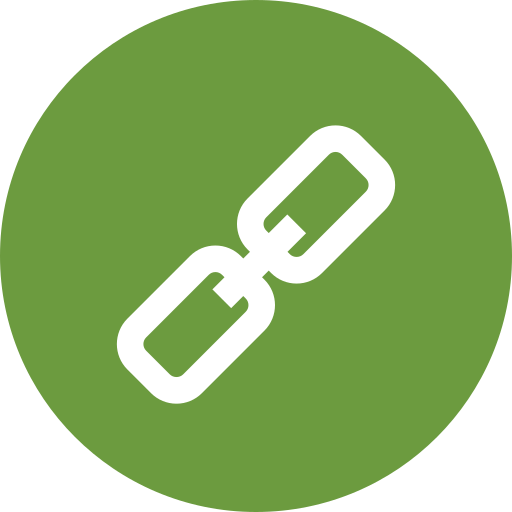| Package | Per pill | Total price | Save | Order |
|---|---|---|---|---|
| 5mg × 100 Pills | $0.32 | $31.95 + Bonus - 7 Pills | - | Add to cart |
| 5mg × 200 Pills | $0.24 | $48.25 + Bonus - 11 Pills | $16.00 | Add to cart |
| 5mg × 300 Pills | $0.22 | $64.55 + Bonus - 11 Pills | $30.00 | Add to cart |
Frumil is a diuretic medication that is used to treat various conditions such as edema, hypertension, and congestive heart failure. It is a combination of two active ingredients, amiloride and furosemide, which work together to help the body get rid of excess fluid and salt. In this article, we will provide a comprehensive guide on how to buy and use Frumil 5mg, including its benefits, side effects, and dosage.
What is Frumil 5mg?
Frumil 5mg is a medication that is used to treat edema, hypertension, and congestive heart failure. It is a combination of two active ingredients, amiloride and furosemide, which work together to help the body get rid of excess fluid and salt. Amiloride is a potassium-sparing diuretic that helps the body retain potassium, while furosemide is a loop diuretic that helps the body get rid of excess fluid and salt.
Benefits of Frumil 5mg
Frumil 5mg has several benefits, including:
- Effective treatment of edema: Frumil 5mg is effective in treating edema, which is a condition characterized by swelling of the feet, ankles, and hands.
- Blood pressure control: Frumil 5mg is also used to treat hypertension, which is a condition characterized by high blood pressure.
- Treatment of congestive heart failure: Frumil 5mg is used to treat congestive heart failure, which is a condition characterized by the heart's inability to pump enough blood to meet the body's needs.
Side Effects of Frumil 5mg
Like all medications, Frumil 5mg can cause side effects, including:
- Dizziness and lightheadedness: Frumil 5mg can cause dizziness and lightheadedness, especially when standing up from a sitting or lying down position.
- Headache: Frumil 5mg can cause headache, which can be mild or severe.
- Nausea and vomiting: Frumil 5mg can cause nausea and vomiting, which can be mild or severe.
- Diarrhea: Frumil 5mg can cause diarrhea, which can be mild or severe.
Dosage of Frumil 5mg
The dosage of Frumil 5mg varies depending on the condition being treated. The usual dosage is:
- Edema: 1-2 tablets per day, taken in the morning.
- Hypertension: 1-2 tablets per day, taken in the morning.
- Congestive heart failure: 1-2 tablets per day, taken in the morning.
How to Buy Frumil 5mg
Frumil 5mg can be bought from various online pharmacies and retail pharmacies. To buy Frumil 5mg, you can:
- Order Frumil online: You can order Frumil 5mg online from various online pharmacies, such as [insert online pharmacy names].
- Buy Frumil from a retail pharmacy: You can buy Frumil 5mg from a retail pharmacy, such as [insert retail pharmacy names].
- Buy generic Frumil: You can buy generic Frumil 5mg, which is a cheaper alternative to the brand name medication.
Discounts and Coupons
There are several discounts and coupons available for Frumil 5mg, including:
- Discount Frumil online: You can get a discount on Frumil 5mg when you buy it online from certain online pharmacies.
- Discount Frumil 5mg with mastercard: You can get a discount on Frumil 5mg when you pay with a mastercard.
- Cheap Frumil 5mg without a prescription: You can buy cheap Frumil 5mg without a prescription from certain online pharmacies.
Tables
| Medication | Dosage | Price |
|---|---|---|
| Frumil 5mg | 1-2 tablets per day | $10-$20 per tablet |
| Generic Frumil 5mg | 1-2 tablets per day | $5-$10 per tablet |
| Frumil 5mg with mastercard | 1-2 tablets per day | $8-$15 per tablet |
Lists
Here are some lists of things to consider when buying and using Frumil 5mg:
- Things to consider when buying Frumil 5mg:
- Price
- Dosage
- Side effects
- Interactions with other medications
- Things to consider when using Frumil 5mg:
- Take the medication as directed
- Monitor your blood pressure and potassium levels
- Report any side effects to your doctor
- Do not stop taking the medication without consulting your doctor
Conclusion
Frumil 5mg is a medication that is used to treat edema, hypertension, and congestive heart failure. It is a combination of two active ingredients, amiloride and furosemide, which work together to help the body get rid of excess fluid and salt. When buying and using Frumil 5mg, it is essential to consider the dosage, side effects, and interactions with other medications. You can buy Frumil 5mg online or from a retail pharmacy, and there are several discounts and coupons available. By following the guidelines outlined in this article, you can ensure that you are using Frumil 5mg safely and effectively.
Order Frumil 5mg Online
If you are looking to buy Frumil 5mg online, you can order it from various online pharmacies, such as [insert online pharmacy names]. When ordering online, make sure to:
- Check the dosage: Make sure to check the dosage of Frumil 5mg before ordering.
- Check the price: Make sure to check the price of Frumil 5mg before ordering.
- Check the shipping: Make sure to check the shipping options and estimated delivery time before ordering.
Buy Generic Frumil 5mg
If you are looking to buy generic Frumil 5mg, you can find it at a lower price than the brand name medication. Generic Frumil 5mg is a cheaper alternative to the brand name medication, and it is available at various online pharmacies and retail pharmacies. When buying generic Frumil 5mg, make sure to:
- Check the dosage: Make sure to check the dosage of generic Frumil 5mg before buying.
- Check the price: Make sure to check the price of generic Frumil 5mg before buying.
- Check the quality: Make sure to check the quality of generic Frumil 5mg before buying.
By following the guidelines outlined in this article, you can ensure that you are buying and using Frumil 5mg safely and effectively. Remember to always consult with your doctor before starting any new medication, and to report any side effects or interactions with other medications.
Hypokalemia and hypomagnesemia are two common electrolyte disorders that can have significant consequences on the human body. Hypokalemia refers to a condition where the potassium levels in the blood are lower than normal, while hypomagnesemia is a condition where the magnesium levels in the blood are lower than normal. Both conditions can be caused by a variety of factors, including dietary deficiencies, certain medications, and underlying medical conditions. In this article, we will explore the development of hypokalemia and hypomagnesemia, their causes, symptoms, and treatment options.
Causes of Hypokalemia and Hypomagnesemia
There are several causes of hypokalemia and hypomagnesemia, including:
- Dietary deficiencies: A diet that is low in potassium and magnesium can lead to deficiencies in these essential electrolytes.
- Certain medications: Certain medications, such as diuretics and laxatives, can cause potassium and magnesium losses.
- Underlying medical conditions: Certain medical conditions, such as kidney disease, heart failure, and gastrointestinal disorders, can increase the risk of developing hypokalemia and hypomagnesemia.
- Hormonal imbalances: Hormonal imbalances, such as hyperaldosteronism, can lead to potassium losses.
The following table summarizes the common causes of hypokalemia and hypomagnesemia:
| Cause | Hypokalemia | Hypomagnesemia |
|---|---|---|
| Dietary deficiencies | Yes | Yes |
| Certain medications | Yes | Yes |
| Underlying medical conditions | Yes | Yes |
| Hormonal imbalances | Yes | No |
Symptoms of Hypokalemia and Hypomagnesemia
The symptoms of hypokalemia and hypomagnesemia can vary depending on the severity of the condition. Some common symptoms include:
- Muscle weakness: Muscle weakness is a common symptom of both hypokalemia and hypomagnesemia.
- Fatigue: Fatigue is a common symptom of both hypokalemia and hypomagnesemia.
- Palpitations: Palpitations are a common symptom of hypokalemia.
- Seizures: Seizures are a common symptom of hypomagnesemia.
The following list summarizes the common symptoms of hypokalemia and hypomagnesemia:
- Common symptoms of hypokalemia:
- Muscle weakness
- Fatigue
- Palpitations
- Constipation
- Common symptoms of hypomagnesemia:
- Muscle weakness
- Fatigue
- Seizures
- Abnormal heart rhythms
Treatment Options for Hypokalemia and Hypomagnesemia
The treatment of hypokalemia and hypomagnesemia depends on the underlying cause of the condition. Some common treatment options include:
- Potassium supplements: Potassium supplements can be used to treat hypokalemia.
- Magnesium supplements: Magnesium supplements can be used to treat hypomagnesemia.
- Dietary changes: Dietary changes, such as increasing potassium and magnesium intake, can be used to treat hypokalemia and hypomagnesemia.
- Medication adjustments: Medication adjustments, such as discontinuing diuretics or laxatives, can be used to treat hypokalemia and hypomagnesemia.
The following table summarizes the common treatment options for hypokalemia and hypomagnesemia:
| Treatment Option | Hypokalemia | Hypomagnesemia |
|---|---|---|
| Potassium supplements | Yes | No |
| Magnesium supplements | No | Yes |
| Dietary changes | Yes | Yes |
| Medication adjustments | Yes | Yes |
Prevention of Hypokalemia and Hypomagnesemia
Prevention is key to avoiding hypokalemia and hypomagnesemia. Some ways to prevent these conditions include:
- Eating a balanced diet: Eating a balanced diet that is rich in potassium and magnesium can help prevent deficiencies in these essential electrolytes.
- Avoiding certain medications: Avoiding certain medications, such as diuretics and laxatives, can help prevent potassium and magnesium losses.
- Managing underlying medical conditions: Managing underlying medical conditions, such as kidney disease and heart failure, can help prevent hypokalemia and hypomagnesemia.
- Monitoring electrolyte levels: Monitoring electrolyte levels regularly can help detect hypokalemia and hypomagnesemia early on.
The following list summarizes the ways to prevent hypokalemia and hypomagnesemia:
- Eat a balanced diet: Eat a diet that is rich in potassium and magnesium.
- Avoid certain medications: Avoid medications that can cause potassium and magnesium losses.
- Manage underlying medical conditions: Manage underlying medical conditions that can increase the risk of developing hypokalemia and hypomagnesemia.
- Monitor electrolyte levels: Monitor electrolyte levels regularly to detect hypokalemia and hypomagnesemia early on.
Conclusion
Hypokalemia and hypomagnesemia are two common electrolyte disorders that can have significant consequences on the human body. Understanding the causes, symptoms, and treatment options for these conditions is essential for preventing and managing them. By eating a balanced diet, avoiding certain medications, managing underlying medical conditions, and monitoring electrolyte levels, individuals can reduce their risk of developing hypokalemia and hypomagnesemia. If you are experiencing symptoms of hypokalemia or hypomagnesemia, it is essential to seek medical attention to prevent complications and improve outcomes.
























